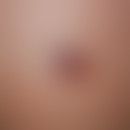Synonym(s)
DefinitionThis section has been translated automatically.
Graminis flos, also known as hay flowers, is a mixture of flower parts, seeds, smaller pieces of leaves and stems of various meadow plants. They consist of the grasses quackgrass, couch grass, meadow lolch, meadow fescue, meadow timothy, meadow foxtail, rough meadow grass and tussock grass. The harvested hay is simply sieved several times to remove coarse stem parts, sand, dust and soil.
See also under hay flower sacking.
Not of pharmacopoeial quality.
HMPC: not processed
ESCOP: not processed
Commission E- Monograph: degenerative diseases of the rheumatic type
Empirical medicine: blunt injuries, supportive for hematoma resorption, in the form of hay flower baths or hot compresses for pain relief in rheumatic diseases, lumbago, chilblains, also for inhalation in colds.
IngredientsThis section has been translated automatically.
Graminis flos contains coumarin glycosides and furanocoumarins as odorous substances, essential oils and tanning agents. The coumarin content depends on the presence of more than 10% of clover flowers in addition to the grass flowers.
You might also be interested in
EffectsThis section has been translated automatically.
Graminis flos has a local hyperemic effect and influences internal organs through cutivisceral reflexes.
Field of application/useThis section has been translated automatically.
Hay flowers are used to treat rheumatic diseases and blunt injuries.
DosageThis section has been translated automatically.
Hay flowers can be used 1 to 2 times a day in the form of compresses. The hay-flower sack, which has a temperature of approx. 42 degrees Celsius, is placed directly on the area to be treated.
ContraindicationThis section has been translated automatically.
In the case of open injuries, acute rheumatic attacks or inflammations or an allergy to grass pollen, it should not be used.
InteractionsThis section has been translated automatically.
There are no known interactions with other drugs.
Trade namesThis section has been translated automatically.
e.g. Diaderma® medicinal herbs hay flower bath; Schupp hay flower extract; also available as hay flowers in pharmacies
LiteratureThis section has been translated automatically.
- Schilcher H (ed.) in, Leitfaden Phytotherapie, Urban & Fischer Verlag (2016) Munich, p.156 f
- Wenigmann M. (2017) Phytotherapy medicinal drugs, phytopharmaceuticals, application. Urban & Fischer, pp. 123-124
Blaschek W (2015) Wichtl tea drugs and phytopharmaceuticals. A handbook for practice. Wissenschaftliche Verlagsgesellschaft Munich. S 304-305




